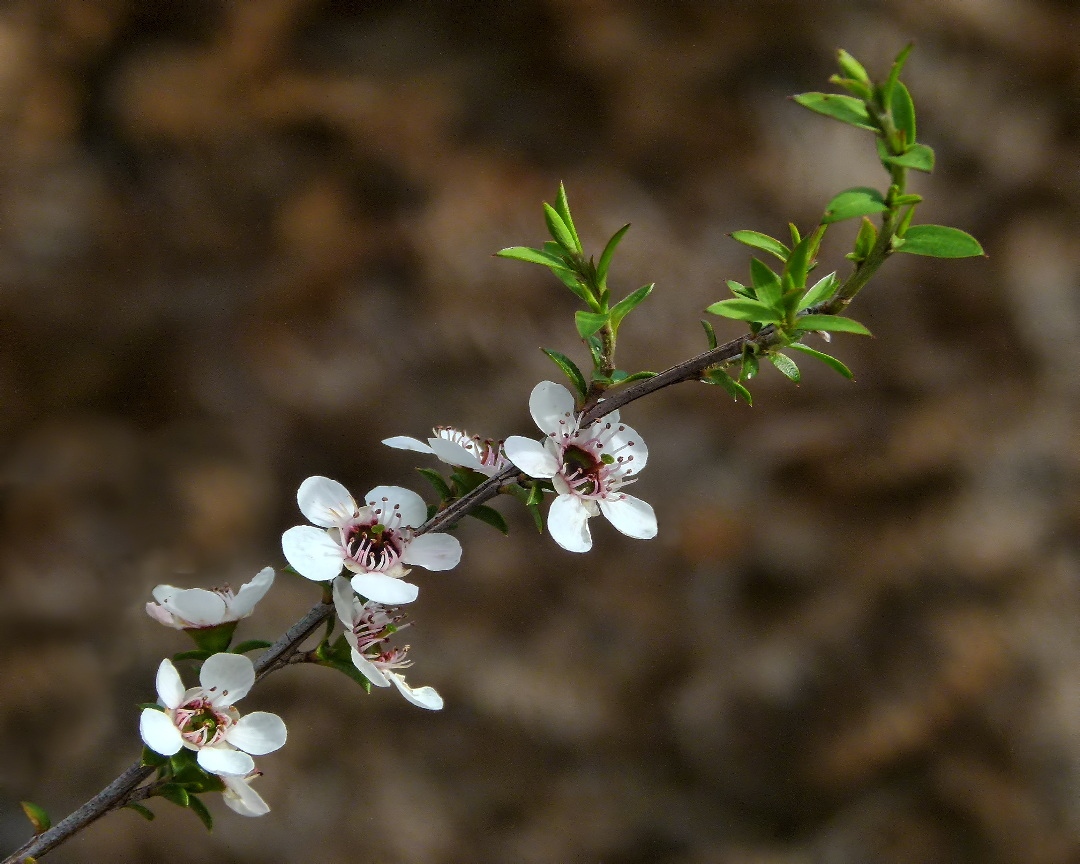Above: Mānuka or Tea Tree. Photo / Sid Mosdell / Creative Commons
Aotea, Great Barrier Island, is the rohe of local iwi Ngāti Rehua Ngātiwai ki Aotea, and for centuries their ancestors have relied on rongoā, the traditional Māori medicine, to promote well-being and healing.
Today we’re looking at 5 key medicinal plants of Aotea, how to identify them and what they’ve been traditionally used for.
Mānuka (Leptospermum scoparium): Mānuka is pretty synonymous with Aotea.The island experienced extensive deforestation during the early European settlement period for logging and agriculture. When those activities proved uneconomic, Mānuka was among the first plants to naturally regenerate on the cleared or disturbed land. It’s always been a widely recognized and cherished medicinal plant for tangata whenua though. An evergreen shrub or small tree with small, dark-green leaves and aromatic white or pink flowers, it’s probably the most popular tree on modern day Aotea. Mānuka is known for its powerful healing properties and has been traditionally used by Ngāti Rehua Ngātiwai ki Aotea and other Iwi for its antibacterial and anti-inflammatory benefits. The leaves and bark of Mānuka are often prepared as infusions or applied topically to treat wounds, burns, and skin infections.
Kawakawa (Macropiper excelsum): Kawakawa is a significant plant in Rongoā Māori and can be found throughout Aotea. This aromatic shrub has heart-shaped, bright-green leaves with distinctive holes caused by the kawakawa looper moth caterpillar. It bears small, round, berry-like fruit. Ngāti Rehua Ngātiwai ki Aotea, has long valued Kawakawa for its medicinal properties, which include alleviating digestive ailments, promoting general well-being, and soothing skin disorders. Traditionally, the leaves are brewed into a tea or used as a poultice for various remedies.
Horopito (Pseudowintera colorata): Horopito is a unique and important medicinal plant found on Aotea, Great Barrier Island. It is a small evergreen shrub with leathery, dark-green leaves that have distinctive red undersides. Horopito is highly regarded for its antifungal properties and has been traditionally used by Ngāti Rehua Ngātiwai ki Aotea and other Iwi to address gastrointestinal issues. The leaves of Horopito can be prepared as a tea or used topically as an infusion to help relieve certain skin conditions.
Harakeke (Phormium tenax): Harakeke, commonly known as flax, holds cultural significance and medicinal value on Great Barrier Island. This tall, perennial plant features long, sword-like leaves that grow in a fan-like pattern from the base. The leaves are dark green with a distinctive blue-gray hue. Ngāti Rehua Ngātiwai ki Aotea and other Iwi have utilized Harakeke as a wound healer, assisting in the recovery of skin infections, and as a gentle laxative. The gel-like substance found within the leaves is often applied topically to promote healing.
Kūmarahou (Pomaderris kumeraho): Kūmarahou, a native shrub, can be found in various habitats on Aotea. It has small, yellow flowers clustered together, creating a vibrant display during flowering season. Kūmarahou is highly regarded by Ngāti Rehua Ngātiwai ki Aotea and other Iwi for its diuretic properties, its historical use as a blood purifier, and its potential to support respiratory health. Traditionally, the Iwi prepared infusions from the leaves and flowers of Kūmarahou for internal use.
These plants, deeply intertwined with the cultural heritage of Ngāti Rehua Ngātiwai ki Aotea continue to play a significant role in the practice of Rongoā Māori on Aotea.
Their unique characteristics and therapeutic properties offer a natural alternative for health and well-being.
They’re rapidly growing acclaim further afield too, just check out the success of Aotea Cosmetics.
Disclaimer: The information provided in this article is for educational purposes only and should not replace medical advice. Always consult with your healthcare provider before using any herbal remedies or alternative treatments. The descriptions of the plants are general and may vary in appearance within the Aotea, Great Barrier Island region.







